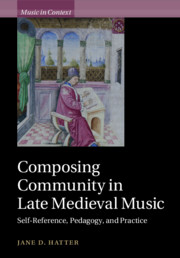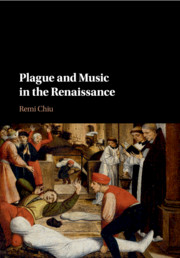Composing Community in Late Medieval Music
When we sing lines in which a fifteenth-century musician uses ethereal polyphony to complain mundanely about money or hoarseness, more than half a millennium melts away. Equally intriguing are moments in which we experience solmization puns. These familiar worries and surprising jests break down temporal distances, humanizing the lives and endeavors of our musical forebears. Yet many instances of self-reference occur within otherwise serious pieces. Are these simply in-jokes, or are there more meaningful messages we risk neglecting if we dismiss them as comic relief? Music historian Jane D. Hatter takes seriously the pervasiveness of these features. Divided into two sections, this study considers pieces with self-referential features in the texts separately from discussions of pieces based on musical self-referential elements. Examining connections between self-referential repertoire from the years 1450–1530 and similar self-referential creations for painters' guilds, reveals musicians' agency in forming the first communities of early modern composers.
- Allows readers to understand how musical culture and celebrity functioned in late medieval and early modern Europe
- Will appeal to a wide interdisciplinary audience of scholars studying late medieval art, literature and religion as well as musicologists and cultural historians
- Enhances appreciation of how music fits into broader social trends of the late medieval period
Reviews & endorsements
‘This is a wonderful book with a clear and convincing central claim. Jane D. Hatter's engagement with primary sources and recent scholarly literature on music, art, and cultural history displays highly original thought and will give scholars a fresh perspective on what they thought they knew.' David J. Rothenberg, Case Western Reserve University, Ohio
‘Composing Community in Late Medieval Music is the first book-length study to explore a pivotal paradigm shift in European music history – the decades around 1500 when composers became self-conscious professionals both individually and as a group. Jane D. Hatter explores the ways in which this self-consciousness began to express itself in individual works. Her fascinating study deftly disentangles the various musical, social and cultural strands in this complex process and provides essential reading for every student of the musical Renaissance.' Wolfgang Fuhrmann, Universität Leipzig
‘[A] stimulating new study … This is an important book, not least because the growing self-awareness of composers was a turning point in music history. Hatter presents a small but significant part of this story: a self-referential repertoire that represents or even helps to build a new professional identity for composers.’ Paul Kolb, Early Music History
‘… the book is stimulating and profitable to read because it brings together many well-known aspects in an interesting way and enriches them with detailed observations.’ Nicole Schwindt, Die Musikforschung
Product details
August 2021Paperback
9781108465595
299 pages
244 × 170 × 16 mm
0.54kg
Available
Table of Contents
- Introduction
- Part I. Music about Musicians:
- 1. Paintings about painters to music about musicians
- 2. Miserere Supplicanti Du Fay: building community through musical devotions at Cambrai Cathedral
- 3. Ora Pro Nobis: forms of self-reference in musical prayers for musicians
- 4. Plorer, Gemir, Crier: musical mourning and the composer
- Part II. Music about Music:
- 5. Paintings about painting and music about music-making
- 6. Simple lessons? Music theory as emblem of composition
- 7. Constructing the composer: symbolic use of the hexachord in compositions c.1500
- 8. Conclusion.






